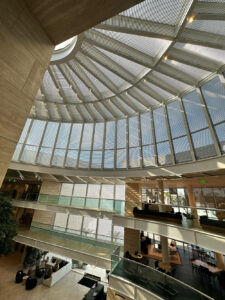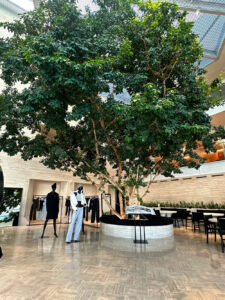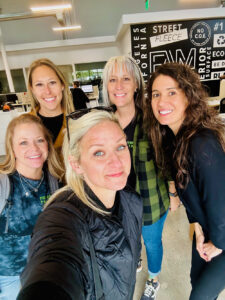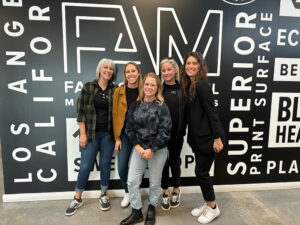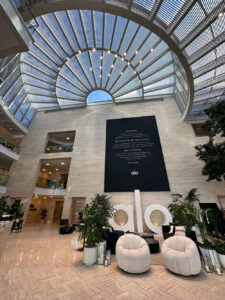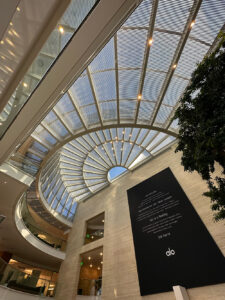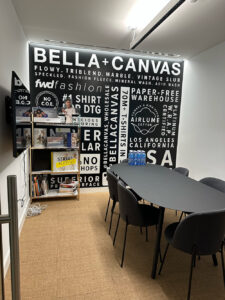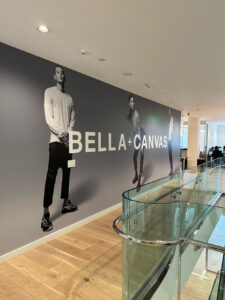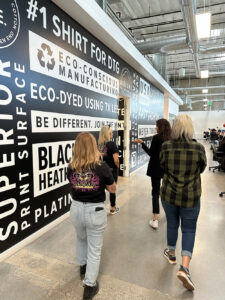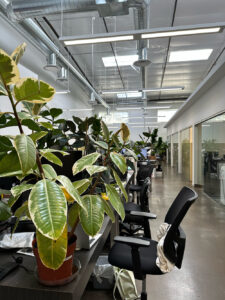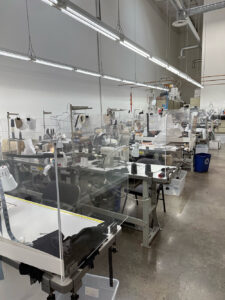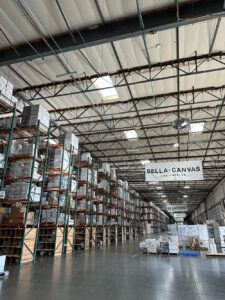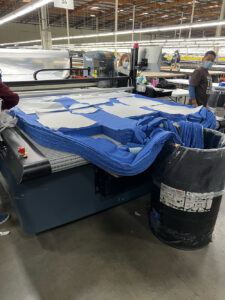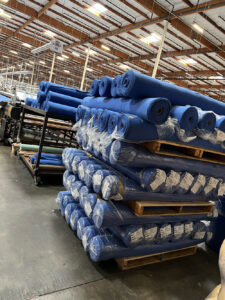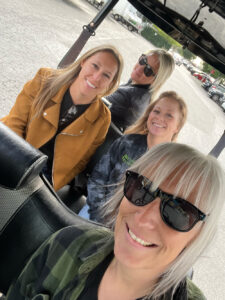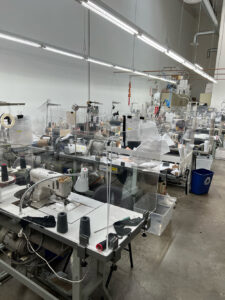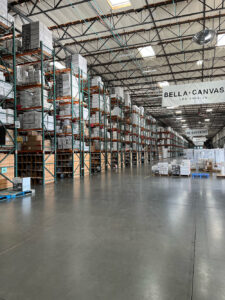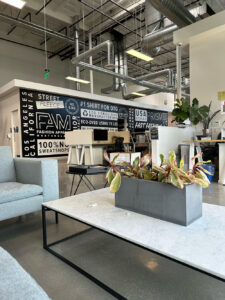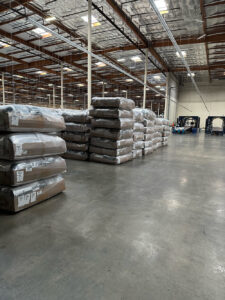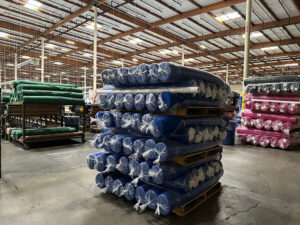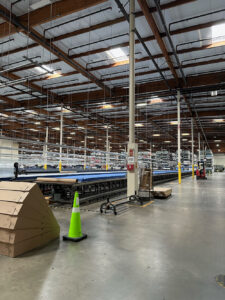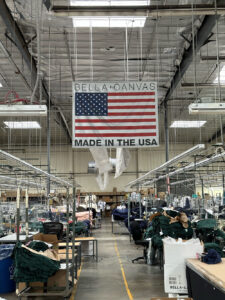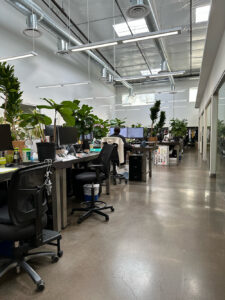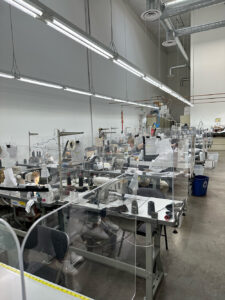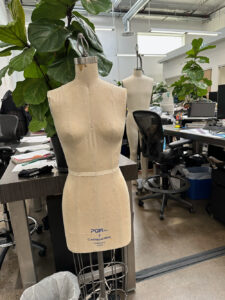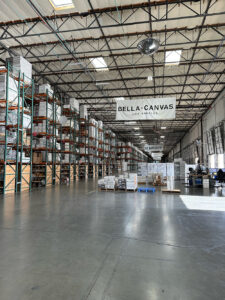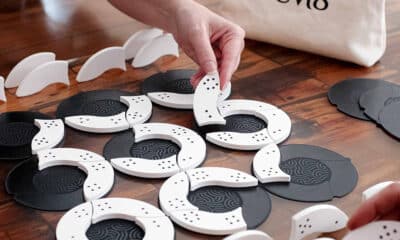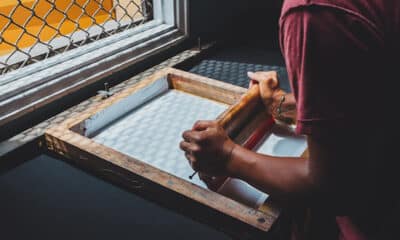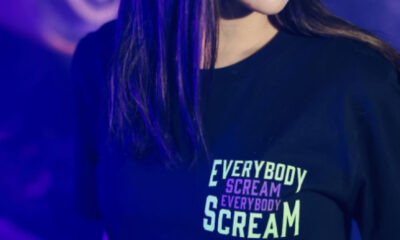JUST BEFORE IMPRESSIONS Expo Long Beach, Bella+Canvas opened its Los-Angeles headquarters to me and three members of the Print Girl Mafia: Nikki Bowen (Cotton Street Apparel), Christina Haines (Varsity,) and Deanna Smith (N the Zone Ink). The women who hosted us, Megan Spire, VP of sales, and Carissa Richmond, director of national sales, were just two representatives of a more than 300-employee staff that is more than 60-percent female.
As you can see in the video below, the wholesale apparel provider’s L.A. manufacturing facility is huge – 1.2 million square feet, to be exact. Between this location and a 371,000-square-foot facility in Alabama, the company operates 116 cutting machines. “We operate the largest automated cutting facility in the western hemisphere right here in the US, where 100 percent of our laser-guided cutting takes place,” Carissa says. “Across our California and Maryland distribution centers and Alabama cutting facility, we support more than 1000 American jobs.”
The advantage of doing all this cutting (and most of the dying) in California is twofold. First, it “allows us to have full control,” Carissa explains. Second, and “more importantly,” it helps “give transparency to our customer base.”
The same priorities extend to operations in Central America, where most of the sewing is done. “Our nearshore manufacturing model is very important, as it allows us much faster speed to market,” Carissa says. “This is truly one of our biggest differentiators.”
In fact, the company owns 70 percent of these operations “with plans to own more in the next year,” she says. With 7300-plus employees, it is the second largest employer after the government in Masaya, Nicaragua. “You can view the name, location, and number of employees at each factory via the Transparency page on our website,” Carissa says. “This way we can require high standards for corporate social responsibility and make sure the facilities teams are meeting that standard.”
On January 19 – the day of our tour – Bella + Canvas posted this message to its Instagram followers:
“Transparency has always been our biggest priority, and it was important for us to take our stand on this subject,” Carissa says. “It was really a call to action for our industry. We’ve always stayed true to our core values, and we stand against slave labor. When companies are not transparent about their supply chains, they make consumers unwilling participants. Bella+Canvas does routine testing on its garments to guarantee they’re free of banned cotton sourced from slave labor regions.”
Screen Printing magazine asked our Brain Squad for their response to this news. See if they consider globalization, sustainability, and forced labor when working with blank apparel providers here.
Eco Efforts
To Bella+Canvas, transparency goes beyond having the right stance on slave labor. According to the company, “sustainability is a mindset.”
Solar panels adorn the ceiling of the manufacturing facility in L.A. Additionally, a solar farm is being built in Nicaragua that will lead to carbon neutrality in 2025 and provide power to the local community.
Eighty percent of fabric dying is completed in L.A. in adheres with the strictest environmental regulations in the world. Bella+Canvas follows federal and state regulations for discharging effluents into rivers, streams, and the ocean. The wastewater is extensively treated at billion-dollar water reclamation sites.
Bella+Canvas only uses Blue Sign Certified, non-harmful chemicals and dyes that adhere to international sustainability standards.
Excess fabric is recycled or repurposed.
PHOTO GALLERY (27 IMAGES)
Advertisement


 Case Studies2 months ago
Case Studies2 months ago
 Art, Ad, or Alchemy2 months ago
Art, Ad, or Alchemy2 months ago
 Andy MacDougall2 months ago
Andy MacDougall2 months ago
 Columns4 weeks ago
Columns4 weeks ago
 Editor's Note3 weeks ago
Editor's Note3 weeks ago
 Marshall Atkinson3 weeks ago
Marshall Atkinson3 weeks ago
 Thomas Trimingham2 months ago
Thomas Trimingham2 months ago
 News & Trends2 months ago
News & Trends2 months ago
